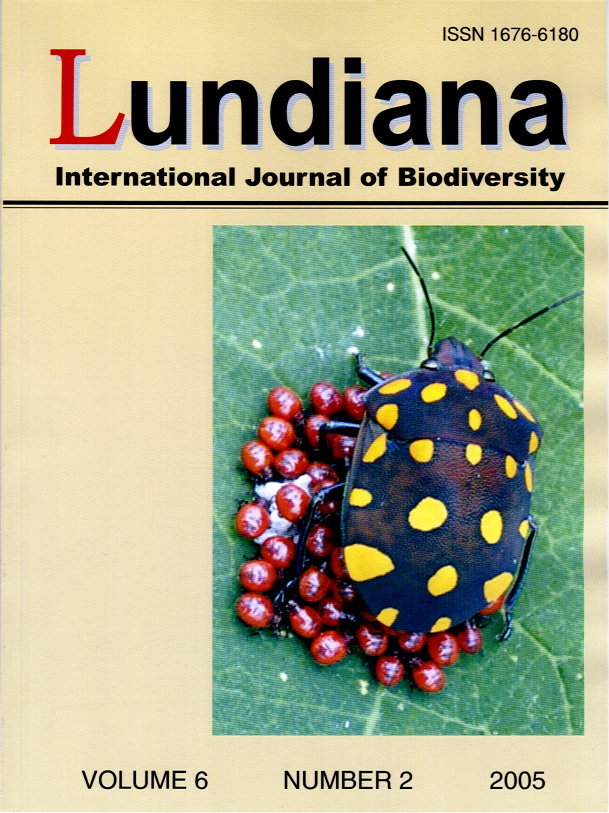: Phenological activity of Guazuma ulmifolia Lam. (Malvaceae) in a deciduous seasonal forest in northern Minas Gerais.
DOI:
https://doi.org/10.35699/2675-5327.2005.22096Keywords:
Phenology, Guazuma ulmifolia, mutamba, environmental seasonalityAbstract
Studies on plant phenology produce important insights about plant adaptations to climatic changes and its associated herbivore fauna. This study reports annual phenological variations in Guazuma ulmifolia (Malvaceae), correlating the timing of these phenological events with local climatic variables. The phenology of G. ulmifolia was studied in the COPASA Preservation Area, north of Minas Gerais State, Brazil, from June 2001 to June 2003. Twenty trees were systematically observed bimonthly for changes in six phenological phases: (1) flower buds, (2) flowering, (3) immature fruits, (4) mature fruits, (5) leaf fall and (6) leaf flushing. The flowering of G. ulmifolia did not show a consistent pattern during the study. In fact, only in 2002 a synchronism in flowering was evident, with flower buds occurring from August to November and flowers from August to December. Immature fruits occurred mostly from January to September and mature fruits were observed from May to December. Leaf fall showed a negative correlation with temperature and precipitation, indicating that it increases in the dry and cold season. Leaf flushing did not show an annual consistent cycle, but this phenological phase tended to occur mostly during the rainy season.
Downloads
Downloads
Published
How to Cite
Issue
Section
License

This work is licensed under a Creative Commons Attribution-NonCommercial 4.0 International License.

